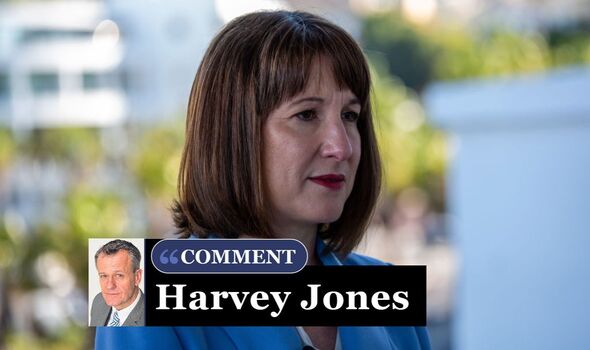
It is normally assumed that London is the driving force of Britain’s housing market, with stellar prices and growth every year.
However, research published this morning, Monday, December 30, has revealed an unlikely winner – in terms of price growth – over the past 10 years.
Stoke-on-Trent posted a spectacular 17.4 percent rise in the average sale price – taking the average up by £33,240 to £227,002.
The figures, published by the Halifax, suggest that property investors piled into the city through 2024 to take advantage of relatively low prices, at least compared to the capital and many other areas.
Yet while the price increase will be positive for those already on the property ladder – because it increases their “bricks and mortar” wealth – it will have made life more difficult for those trying to buy a first home.
Slough in Berkshire had the second highest annual price jump of 14.9 percent to £497,704, followed by Oldham (14.6 per cent), Bradford (13.1 per cent) and Bolton (12.9 per cent).
The study found that some London boroughs actually registered price falls over the past year as many people were simply priced out of the property market.
Southwark, Ealing, Enfield and Harrow, where average homes are worth over £500,000, all registered outright falls in average property values in the range of 3 to 4 percent.
And leafy Kingston-upon-Thames, where average homes were worth over £600,000, and Westminster, where property is valued over £700,000, also saw prices fall in the 12 months to September.
Top ten UK towns and cities with greatest house price growth 2023 to 2024
|
Town / LA |
Region |
Average Price 2023 |
Average Price 2024 |
£ Growth in Price |
% Growth in Price |
|
Stoke-On-Trent |
West Midlands |
£193,662 |
£227,002 |
£33,339 |
17.2% |
|
Slough |
South East |
£433,194 |
£497,704 |
£64,510 |
14.9% |
|
Oldham |
North West |
£218,595 |
£250,546 |
£31,951 |
14.6% |
|
Bradford |
Yorkshire and The Humber |
£200,093 |
£226,261 |
£26,168 |
13.1% |
|
Bolton |
North West |
£223,231 |
£252,070 |
£28,839 |
12.9% |
|
Barnsley |
Yorkshire and The Humber |
£199,725 |
£224,886 |
£25,161 |
12.6% |
|
Wolverhampton |
West Midlands |
£247,403 |
£278,083 |
£30,680 |
12.4% |
|
Doncaster |
Yorkshire and The Humber |
£204,371 |
£228,040 |
£23,669 |
11.6% |
|
Dunfermline |
Scotland |
£208,013 |
£230,379 |
£22,365 |
10.8% |
|
Hamilton |
Scotland |
£208,360 |
£229,835 |
£21,474 |
10.3% |
2023 vs 2024, rolling 12-month data to end September each year, minimum sample 150
House prices have remained robust in the face of two years of rapidly rising interest rates, which pushed up mortgage costs since 2021. Official data shows that the average UK house price rose by 3.4 per cent in the 12 months to October, up from the 2.8 per cent recorded in the previous annual period.
The average property in England is worth £309,000 — up 3 percent — £222,000 in Wales and £197,000 in Scotland, according to the Office for National Statistics.
Top ten UK towns and cities with lowest house price growth 2023 to 2024
|
Town / LA |
Region |
Average Price 2023 |
Average Price 2024 |
£ Growth in Price |
% Growth in Price |
|
Huddersfield |
Yorkshire and The Humber |
£279,012 |
£260,498 |
-£18,514 |
-6.6% |
|
Wirral |
North West |
£311,003 |
£294,250 |
-£16,753 |
-5.4% |
|
Ealing |
London |
£588,383 |
£559,788 |
-£28,596 |
-4.9% |
|
Southwark |
London |
£583,203 |
£555,325 |
-£27,878 |
-4.8% |
|
Kingston Upon Thames |
London |
£607,522 |
£582,282 |
-£25,240 |
-4.2% |
|
Enfield |
London |
£527,807 |
£506,667 |
-£21,140 |
-4.0% |
|
Harrow |
London |
£572,921 |
£552,203 |
-£20,718 |
-3.6% |
|
Westminster |
London |
£757,083 |
£730,859 |
-£26,224 |
-3.5% |
|
Bromley |
London |
£558,980 |
£541,131 |
-£17,848 |
-3.2% |
|
Aylesbury |
South East |
£435,416 |
£423,252 |
-£12,164 |
-2.8% |
2023 vs 2024, rolling 12-month data to end September each year, minimum sample 150
Amanda Bryden, head of mortgages at Halifax, said buyers were turning to affordable areas where property valuations remain below the national average.
She said: “Some areas of the UK – including Stoke-on-Trent, Wolverhampton and Dunfermline – have seen remarkable house price growth this year, as buyers perhaps seek out more affordable areas where house prices, despite increases, are still coming in under the national average.
“This trend is causing house prices in some areas to flip from slowing, to growing, such as Stoke-on-Trent, which was the biggest faller last year but showed the highest rate of growth, regionally, this year.
“That story doesn’t play out nationally. The high asking price for London properties means house prices have fallen in several boroughs – perhaps a reflection that the relatively high cost of properties is stretching affordability for buyers, or perhaps what they are willing to pay.
“Overall, London has a house price to earnings ratio of 8.22, making it one of the least affordable places to live in the country, against a national ratio of 6.55.
“Regionally, while the South East has seen some robust growth – in places like Basingstoke and Maidstone, overall, it is lagging behind the rest of the UK, with movement of just +1.8 percent, compared to +6.3 percent for the UK overall.
“Much like London, first-time buyers won’t find a bargain here, as the slow growth is likely a consequence of the already-high property prices, relative to the national average.”
She added: “When you’re buying a home there’s so much to consider – it can become overwhelming, with the cost of a property just one of many things to think about.
“My advice would be to make yourself a list of everything that’s important to you, decide which are the deal-breakers and which you’re willing to compromise on, then get stuck in with viewing houses and visiting areas to get a feel for each place.
“Be open to everything that’s affordable and suits your personal circumstances – you never know where you might find a hidden gem that’s just right for you.”



















